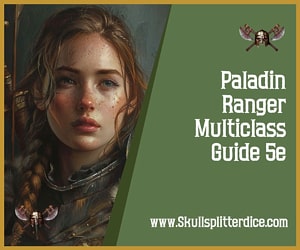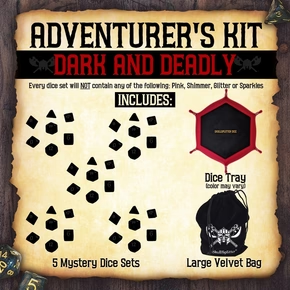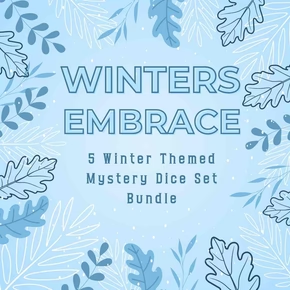
Paladin Ranger Multiclass Guide for DND 5e
Table of Contents:
Paladin Ranger Multiclass Guide
Hunt the Unholy
Rangers are martial survivalists, tough but with adaptable features and a touch of spellcasting for withstanding what the wilderness can throw at you. Paladins are holy champions, scions of celestial power and keepers of divine oaths. Put them together and we get god’s left hand, a hunter of the unholy able to track evil to their dark pits and administer righteous retribution. Recite your oath and catch evil’s scent as we go through everything you need to know.

Why Play a Paladin/Ranger Multiclass?
Both paladin and ranger are primarily martial characters with ways to pile damage on top of a normal attack, and conveniently that damage can all mix nicely together for the same attacks. Paladins give us access to powerful defensive capabilities, while ranger gives us access to some powerful offensive and utility abilities combining into a tough DPS and yet still skill utility character. Both are martial classes that can excel in melee combat, with stackable damage source options that can combine into a tanky high damage output frontliner (though maybe not quite as good as Baldurs Gate would have you believe).
What are the Downsides?

The biggest problem with this particular combination is how thinly spread we have to get on ability scores. A multiclass paladin requires at least 13 points in both Strength and Charisma, while ranger requires at least 13 points in both Dexterity and Wisdom. This automatically means we’re going to have to accept lower ability score bonuses on our primary abilities to pay for all those prerequisites.
The ranger class wasn’t reworked so many times because it was too good. Rangers suffered from the situational nature of their core features and while the revisions have largely fixed that it’s hard to say what the ranger does better than other classes. We can achieve an effective multiclass with the paladin but taking any ranger levels is a debatable choice at the start. For pure damage you might be better off going with fighter for the action surge or rogue for the sneak attack. Or pairing specifically with paladin, going for an eldritch knight with warlock levels may be a better option for the eldritch blast and smite fueling warlock spell slots.
And as with all multiclass options, multiclassing means that you forego some late game class features and are slower to acquire others. A single-class character has more focused powerful features, while multiclass characters will have more versatility and options.
What Class Features Do We Care About?
While not every class feature is going to play a big role in our builds, you should be aware of the following class features and combat abilities while putting your ranger paladin together.
Significant Ranger Features
- Deft Explorer. This is one of the new optional features that replaced natural explorer and all the better for it. Deft explorer now grants double proficiency bonus on a chosen skill, a couple extra languages, and with 5 ranger levels it also grants us a fast walking, climbing and swimming speed.
- Favored Foe. It uses concentration, which means we can’t stack it with hunter’s mark (sad I know) but it’s still basically free additional damage that will scale up with our ranger levels. It also doesn’t take any action; you can just choose to apply it when you hit with an attack making it even more free.
- Fighting Styles. Just like a fighter, the ranger gains access to a fighting style that will be integral to some of our builds. We'll in fact be getting a similar feature from paladin, meaning we'll get to enjoy an additional fighting style.
- Hunter’s Mark. We get favored foe already which is almost like a free downsized version of this unique ranger spell, but the original hunters mark still matters. Hunter’s mark is a ranger exclusive spell that stacks an extra d6 damage for every hit we make for the rest of a combat for the low cost of a 1st level spell slot and a bonus action.
- Extra Attack. Gained at 5th level, additional attacks are always useful, but especially as a ranger since favored foe triggers off each of our attacks. We can’t do multiple divine smites in the same turn but more weapon damage is always a good thing. Keep in mind though this won’t stack with the paladin’s identical ability.
- Archetype Features. Rangers gain their archetype at 3rd level and for some of them it’s worth the levels, we’ll go into each of them later but for now know that we’ll be caring about the ranger archetypes.
Significant Paladin Features
- Lay on Hands. Paladins get a pool of healing equal to 5 times their paladin level. While multiclassing will shrink your lay on hands ability comparatively, it’s always helpful to have healing on hand especially if we want to fill a support role.
- Spellcasting. In all honesty, we plan on pouring our spell slots into smites rather than actually using them for casting, but it’s always helpful to have the options should the need arise.
- Divine Smite. Gained at 2nd level, THIS is the big ticket item that you’re picking paladin for over any other martial class. Divine Smite lets you sacrifice your spell slots for pure extra damage when you hit things with a melee weapon attack. It doesn’t even use an action or bonus action, and we’re free to just choose and stack this damage on whenever we hit with a melee attack. Each 1st level spell slot turns into 2d8 damage, with an extra 1d8 damage for each spell slot level above 1st, up to a maximum of 5d8 smite damage. Or 6d8 smite damage if the target is undead or a fiend.
- Fighting Style. Also gained at 2nd level, your fighting style goes a long way towards buffing up your martial ability. We’ve got some solid options, defense gives us a flat +1 AC bonus, which is a lot more impactful than you might think. Dueling is the option to take if we want to go with a one-handed weapon and a shield for +2 damage per swing. Great weapon fighting lets you reroll damage rolls of 1 or 2 for big two-handed weapons.
- Extra Attack. Gained at 5th level, we can’t do multiple divine smites in the same turn but more weapon damage from additional attacks is always a good thing. Keep in mind though this won’t stack with the ranger’s identical ability.
- Aura of Protection. You gain this feature at level 6, and this is one of the strongest defensive buffs in the game. You and every friendly creature within 10 feet of you gain a bonus to all saving throws equal to your Charisma modifier. By sticking together you can wildly improve your party saving throw and survival rate. 6th level is a lot to ask though, so you'll likely only hit this if just dipping into ranger.
- Sacred Oath. You gain your first sacred oath feature at 3rd level and the oath’s aura ability doesn’t kick in until 7th. Depending on what build you go for, these archetype features may or may not be worth it, but we’ll dig into that more later.
What Level Does a Paladin Ranger “Kick In”?
We have some later synergies we want to take advantage of but at the core we just want to be stacking favored foe/hunter’s mark from ranger and divine smite from paladin. We get those features from a single level of ranger and smite from our 2nd paladin level so the build “kicks-in” at our 3rd total character level.
Do I Take Paladin or Ranger First?

Starting with a class level in paladin vs levels in ranger has very similar proficiencies with a few notable exceptions.
Starting with ranger:
- You miss out on heavy armor proficiency.
- Your saving throws are Strength and Dexterity.
Starting with paladin:
- You get heavy armor proficiency.
- You can start with chain mail.
- Your saving throws are Wisdom and Charisma.
If you’re using medium armor anyway then this is really just a choice between two about equal save proficiency options. If however, you plan on using heavy armor, then you should absolutely start out as a paladin first.
Paladin / Ranger Ability Scores
One of the biggest hurdles for this build is walking the ability distribution tightrope on 4 different ability scores. Firstly, I highly recommend selecting human as your race (the normal version, not the variant) because getting +1 to every ability score is actually like a +4 (+5 counting Constitution) for our build. By taking human and using a point buy to get our scores just right, we can get everything we need.
At our core we’re trying to be a DPS character and Strength should be our highest ability score at 16.
Next, we need at least 13 Dexterity to meet the ranger’s requirements but should go ahead and push that one higher to 14 Dexterity to take advantage of medium armors over heavy armors.
Thankfully, we really only need to meet the minimum requirements on both Wisdom and Charisma since we aren’t actually going to be doing much spellcasting. We still have just enough points though to push both Wisdom and Charisma to 14 which is worthwhile since we already have to push them to 13 anyway.
That leaves us with just enough points to get a con bonus with 12 Constitution.
Finally we just have the human’s base +1 to 9 Intelligence leaving it as our only real dump stat.
As you advance in levels I recommend spending your ability score improvement on Strength. Despite all our multiclassing Strength will still be our primary damage stat.
Multiclass Spellcasting
When you have a multiclass combination of two different spellcasting classes, things can get weird, as you've just created a multiclass spellcaster.
Your spells known stay completely separate, so if you have 3 levels of paladin and 5 levels of ranger, you’ll know the same number of paladin spells as a 3rd level paladin, and the same number of ranger spells as a 5th level ranger.
The spell slots however combine into a special “multiclass spell slots table” which basically counts “half-caster” levels as half a level and “full-caster” levels as one level.
For our build, both rangers and paladins count as “half-casters” so on the following table you’ll count half of your total levels (rounded down) to determine how many spell slots you have.
|
Level |
1st |
2nd |
3rd |
4th |
5th |
6th |
7th |
8th |
9th |
|
1st |
2 |
- |
- |
- |
- |
- |
- |
- |
- |
|
2nd |
3 |
- |
- |
- |
- |
- |
- |
- |
- |
|
3rd |
4 |
2 |
- |
- |
- |
- |
- |
- |
- |
|
4th |
4 |
3 |
- |
- |
- |
- |
- |
- |
- |
|
5th |
4 |
3 |
2 |
- |
- |
- |
- |
- |
- |
|
6th |
4 |
3 |
3 |
- |
- |
- |
- |
- |
- |
|
7th |
4 |
3 |
3 |
1 |
- |
- |
- |
- |
- |
|
8th |
4 |
3 |
3 |
2 |
- |
- |
- |
- |
- |
|
9th |
4 |
3 |
3 |
3 |
1 |
- |
- |
- |
- |
|
10th |
4 |
3 |
3 |
3 |
2 |
- |
- |
- |
- |
|
11th |
4 |
3 |
3 |
3 |
2 |
1 |
- |
- |
- |
|
12th |
4 |
3 |
3 |
3 |
2 |
1 |
- |
- |
- |
|
13th |
4 |
3 |
3 |
3 |
2 |
1 |
1 |
- |
- |
|
14th |
4 |
3 |
3 |
3 |
2 |
1 |
1 |
- |
- |
|
15th |
4 |
3 |
3 |
3 |
2 |
1 |
1 |
1 |
- |
|
16th |
4 |
3 |
3 |
3 |
2 |
1 |
1 |
1 |
- |
|
17th |
4 |
3 |
3 |
3 |
2 |
1 |
1 |
1 |
1 |
|
18th |
4 |
3 |
3 |
3 |
3 |
1 |
1 |
1 |
1 |
|
19th |
4 |
3 |
3 |
3 |
3 |
2 |
1 |
1 |
1 |
|
20th |
4 |
3 |
3 |
3 |
3 |
2 |
2 |
1 |
1 |
Paladin Ranger Equipment

Assuming we’re going to take the route with 14 Dexterity, our best bet is to utilize medium armor. Ideally, we want half plate, but at 750 gp it can be a bit pricey early on and you may need to rely on scale mail for a level or two.
Next, for divine smite to function we have to use melee weapon attacks, and while we could go for a big two-handed weapon or two-weapon fighting I’d recommend sword and board to maximize our AC. This means putting a shield in one hand, and any of the many 1d8 damage one-handed martial weapons. Battleaxe, flail, longsword, morningstar, warpick, and warhammer are all fine options, and lances are on the table for a couple of our builds.
Ranger Paladin Multiclass Builds
There’s no one correct way to play this multiclass choice but consider the following build ideas when putting these two together.
Dragon Knight
The goal here is simple, be a knight and ride your own personal dragon friend into battle with a lance!
Sadly, we can’t do this early, and to set this up we’ll need 2 levels of paladin and 7 levels of ranger, making sure to take the drakewarden archetype. For our two fighting styles we want to go with dueling and defense. With defense, +2 Dex, half-plate, and a shield we’ll be sitting at a pretty 20 AC.
At our 3rd ranger level the drakewarden gets a drake companion, he starts out small but once we get to 7 ranger levels his size improves to medium and we’re specifically allowed to ride him as a mount (but sadly he can’t use his flying speed while doing so).
Now theoretically this should be simple, acquire mount and ride right? Well sort of, thanks to some very awkward action sequencing we have to be very particular on how we do things.
In order for our dragon to use their attacks while we ride them we have to get into the subtly strange rules that 5e has for mounts. Mounts can be either “controlled mounts” which are very simple to use but can’t do much, and “independent mounts” which can do more but take a bit of work to use correctly. For our purposes we need to treat our dragon as an “independent mount” which will allow it to still make use of all its cool abilities, but we have to be very particular on how our turns are sequenced.
The main problem is that our dragon takes their turn immediately after ours, which means we’re stuck like a bump on a log until they take their turn and carry us along with them. The second problem comes from the lance. Lances impose disadvantage on attacks that are within 5 feet, and expect you to strike while you are 10 feet away. This means we want to attack after the dragon moves but before they finish moving and make their own attacks.
The correct sequence looks like this:
- On our turn we hold our attack action for when the target is within range.
- The dragon takes their turn moving towards the enemy.
- Once in range our attack action is triggered, and we make two lance attacks using a divine smite and favored foe.
- The dragon uses their infused strikes reaction to stack another 1d6 damage onto one of our lance attacks.
- The dragon finishes moving another 5 feet finally and makes their own bite attack.
That was all much more complicated than it really should be, but rules as written that’s the way you need to go. If you go through that correctly using a 2nd level smite, you get to charge in for an average 51 damage (2d12 + 1d6 + 3d8 + 2d6 + 4 + 8 + 2) per turn!
Knight of the Spike Trap
The goal of this build is to use the spell spike growth and then slam your opponents into it over and over again as they die to a thousand spike cuts. Note that for this one we need to make use of one of critical role’s archetypes so it isn’t technically base 5e. We also need to get up to 8th level to do what we really want to do.
To accomplish this we need 3 levels of paladin selecting the oath of the open sea and at least 5 levels in ranger selecting the swarmkeeper archetype. For our two fighting styles we once again want to take dueling and defense, using a shield and any of the d8 martial one-handed weapons will still let us deal decent damage while rocking an armor class of 20. Unlike with the other builds, I recommend spending at least one of your ASIs on increasing your Wisdom, since we’re relying heavily on a ranger spell and ability that uses the ranger’s spell save DC.
At the beginning of combat we want to cast the spell spike growth and try to catch as many of the enemies in it as possible. It covers a surprisingly large 20-foot radius with difficult terrain, and for every 5 feet a creature travels in it, they take 2d4 damage. 2d4 may not sound like a lot, but we’re going to stack that up in all sorts of ways.
Firstly, as a swarmkeeper we get a swarm of nature spirits (flavored however you’d like) that let us apply an effect to an attack once per turn. One of those abilities forces a Strength save, and on a failed save you can move them up to 15 feet, which can conveniently be back through that spike growth for a total of 6d4 damage.
Next, thanks to oath of the open sea we get the channel divinity option fury of the tides that we can activate for a minute using a bonus action. While it’s active, once per turn when we hit with a melee attack, we can push the target up to 10 feet away from you without a save of any kind, and if that is into our spike growth, that’s another 4d4 damage.
Because the swarmkeeper movement is in any direction rather than just away, when we combine these effects we can throw them back using the fury of the tides then swerve them back over the same spike growth area using our swarm.
Assuming you stand at the edge of your spike growth and swing, you’ll be able to move your target for 25 feet through your spikes. Adding in favored foe and a smite you’ll doing an average of 52 damage (2d8 + 6 + 2d8 + 1d4 + 10d4) every round!
https://www.skullsplitterdice.com/products/weekly-dice-subscription-sets
Want to grow your hoard? Check out our dice subscriptions!
Other Blog Posts You Might Like:
Our Complete Magic Item 5e Guide HERE.
Want to know how these dice work? Check out our DnD Dice Explained Guide!
Ever want to play a flying space monkey? Check out our Hadozee 5e guide!

Disclaimer
Last updated: January 27, 2019
The information contained on www.SkullSplitterDice.com website (the "Service") is for general information purposes only.
www.SkullSplitterDice.com is a participant in the Amazon Services LLC Associates Program, an affiliate advertising program designed to provide a means for sites to earn advertising fees by advertising and linking to Amazon.com. (source: Section 5)
Blueshift Nine, LLC assumes no responsibility for errors or omissions in the contents on the Service.
In no event shall Blueshift Nine, LLC be liable for any special, direct, indirect, consequential, or incidental damages or any damages whatsoever, whether in an action of contract, negligence or other tort, arising out of or in connection with the use of the Service or the contents of the Service. Blueshift Nine, LLC reserves the right to make additions, deletions, or modification to the contents on the Service at any time without prior notice.
Blueshift Nine, LLC does not warrant that the Service is free of viruses or other harmful components.
Affiliate disclaimer
This affiliate disclosure details the affiliate relationships of Blueshift Nine, LLC with other companies and products.
Some of the links are "affiliate links", a link with a special tracking code. This means if you click on an affiliate link and purchase the item, we will receive an affiliate commission.
The price of the item is the same whether it is an affiliate link or not. Regardless, we only recommend products or services we believe will add value to our readers.
By using the affiliate links, you are helping support the Service, and we genuinely appreciate your support.
Affiliate advertising programs that the Service uses are:
- Amazon Services LLC Associates Program
- As an Amazon Associate, I earn from qualifying purchases.
- Blueshift Nine, LLC is a participant in the Amazon Services LLC Associates Program, an affiliate advertising program designed to provide a means for sites to earn advertising fees by advertising and linking to Amazon.com or endless.com, MYHABIT.com, SmallParts.com, or AmazonWireless.com.
- Pages on this Service may include affiliate links to Amazon and its affiliate sites on which the owner of this Service, Blueshift Nine, LLC, will make a referral commission.